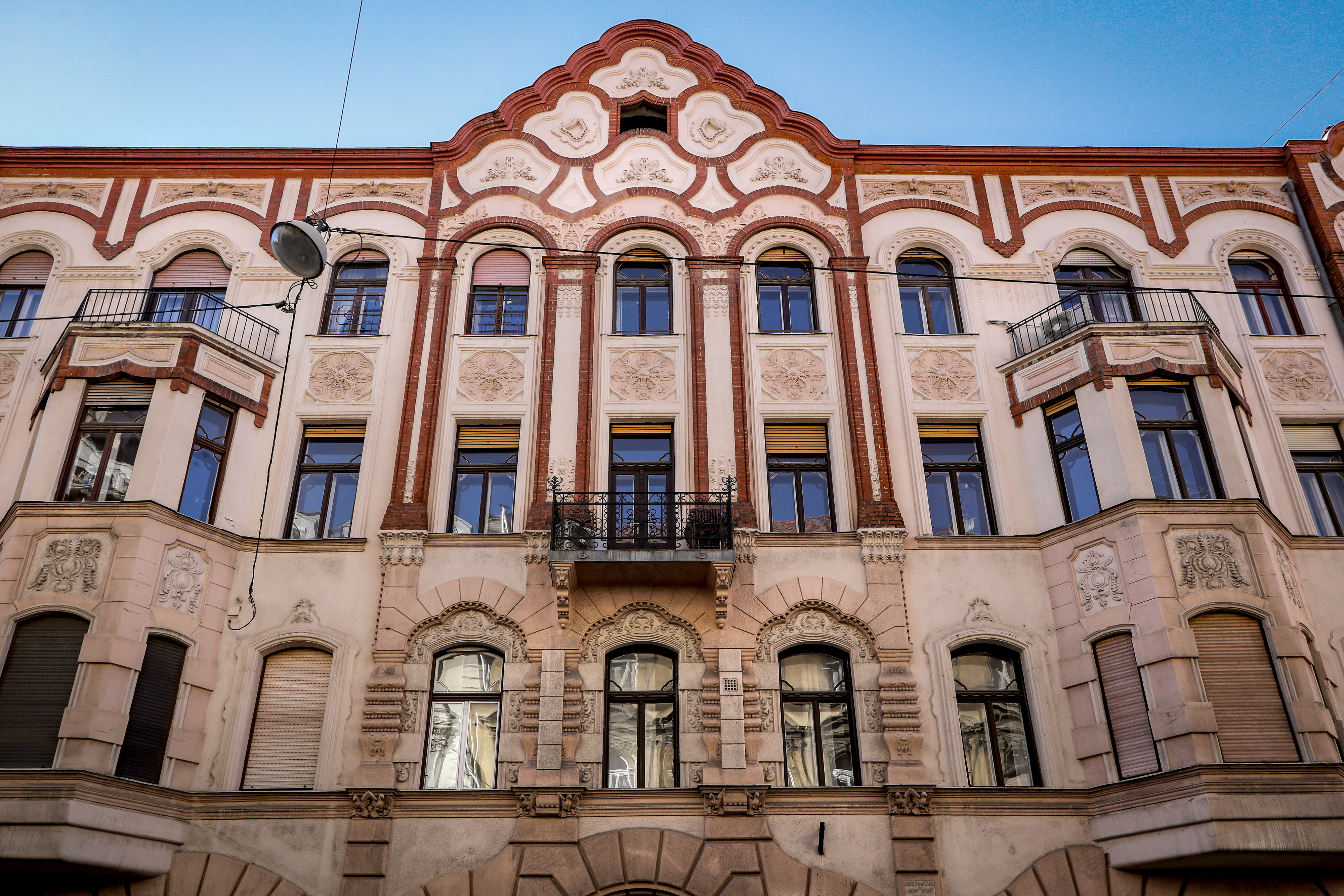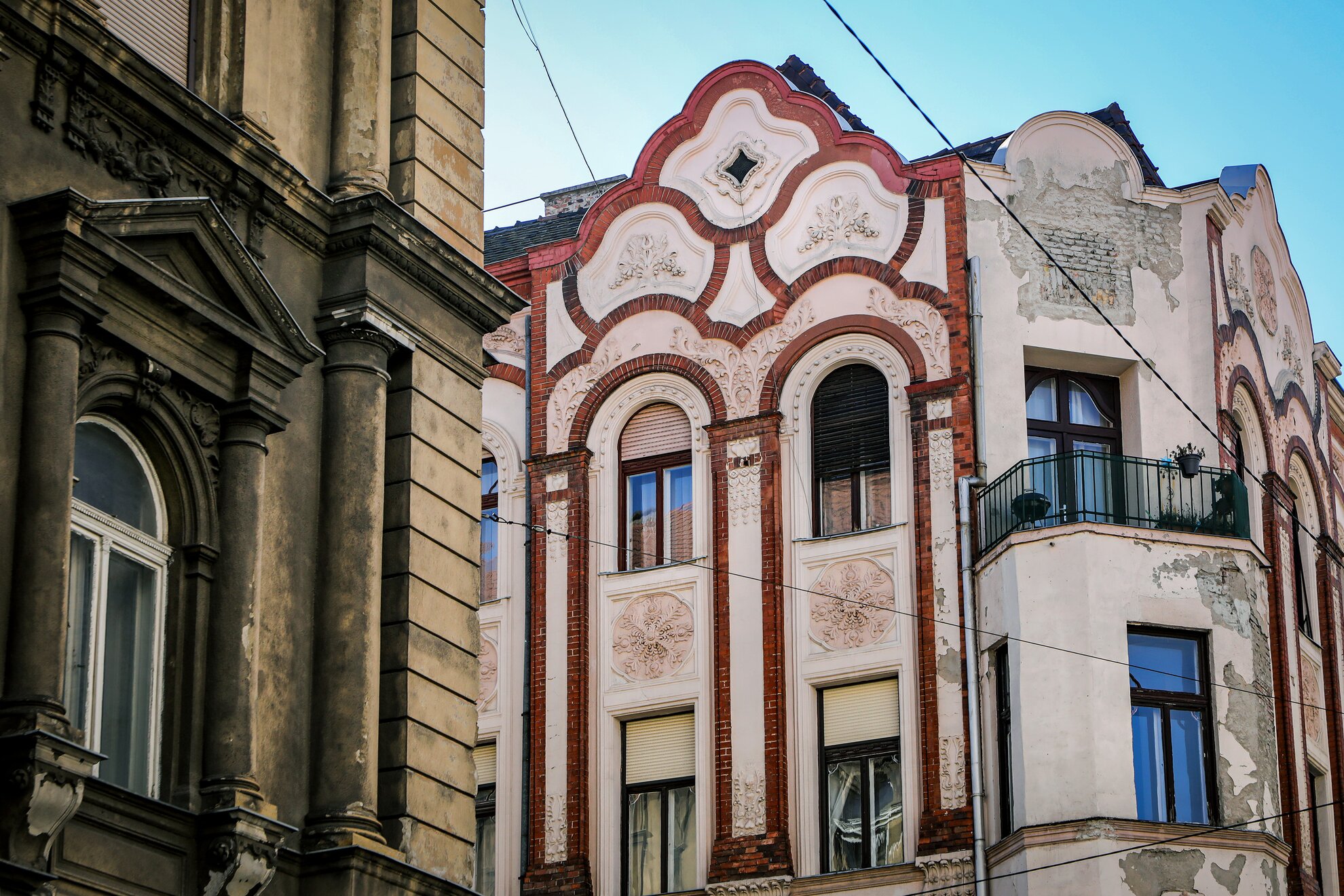
Let’s begin with the particulars. Terézváros, District VI, is full of residential houses created in the style of Art Nouveau. Numerous as these architectural treasures may be, the unfortunate reality is that many stunning façades are slowly falling into disrepair, and the house at Csengery utca 76 is covered with crumbling plaster inside and out. Nonetheless, it still captures your attention, so it's worth taking a closer look at its merits and its history.
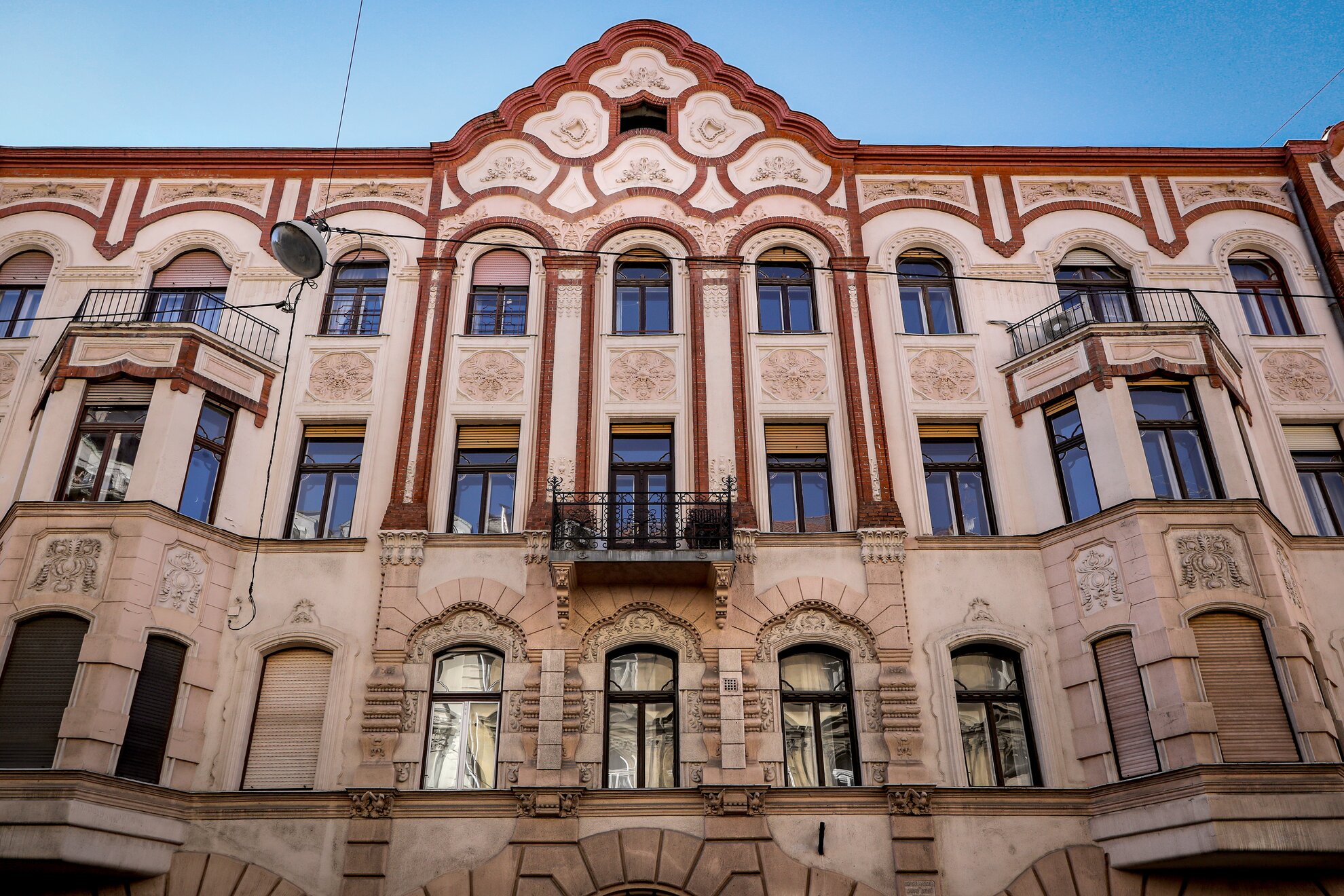
The plot of land here has changed hands many times, including a period of ownership by the Lutheran Church Council. But the dream of creating the current Art-Nouveau building was realised by Catherine Rosenfeld, and the architects who constructed it are a well-known duo in Budapest.
Art Nouveau in Budapest
Art Nouveau erupted in popularity in the early 1900s all across Europe, and two defining names behind the movement include Marcell Komor and Dezső Jakab. Their partnership can be attributed to mere coincidence: Jakab simply walked into Komor's office one day and, seeing the fellow architect buried in work, sat down to draw with him. He didn’t ask for any financial compensation for his work, even when Komor won the tender which Jakab had helped to design.
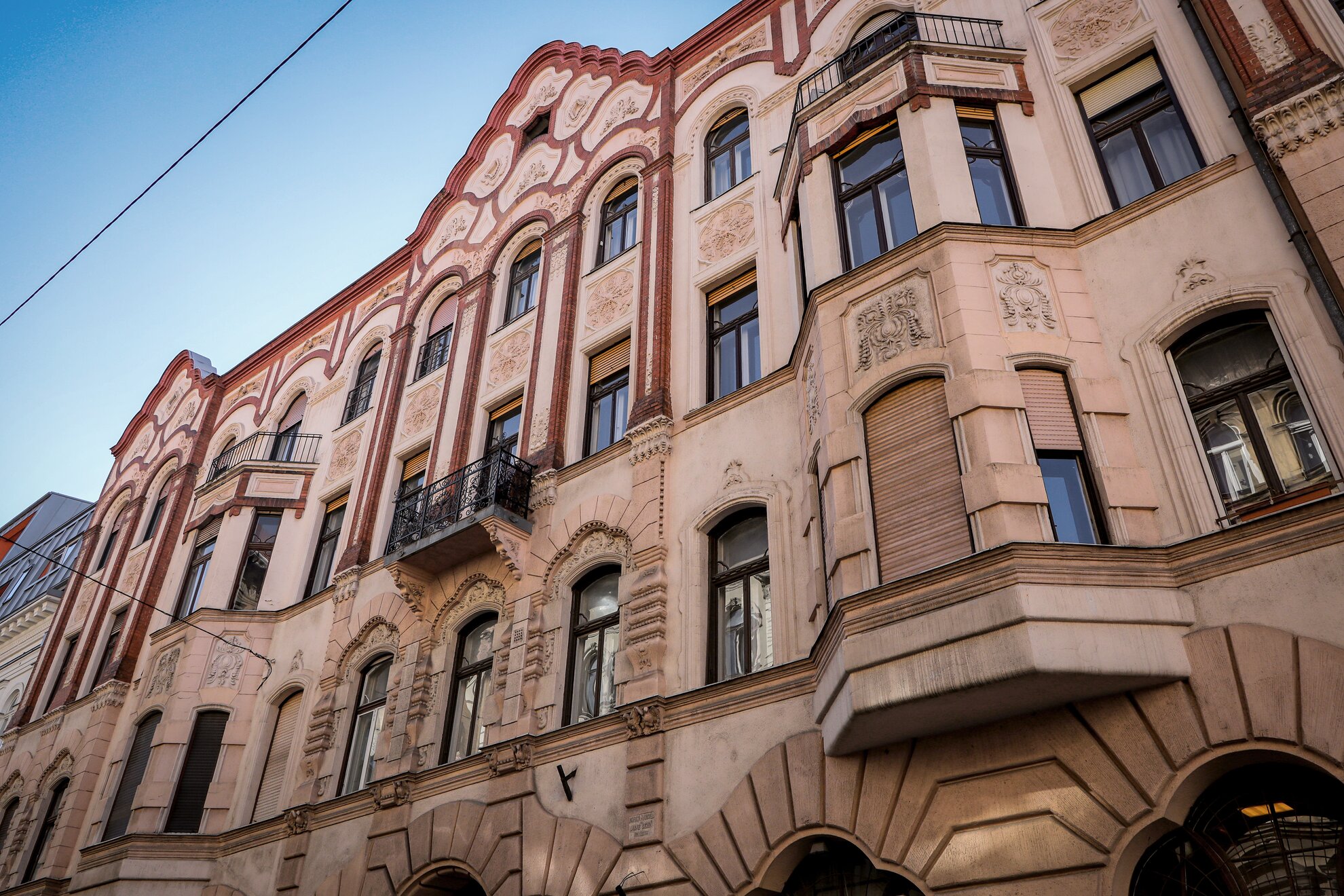
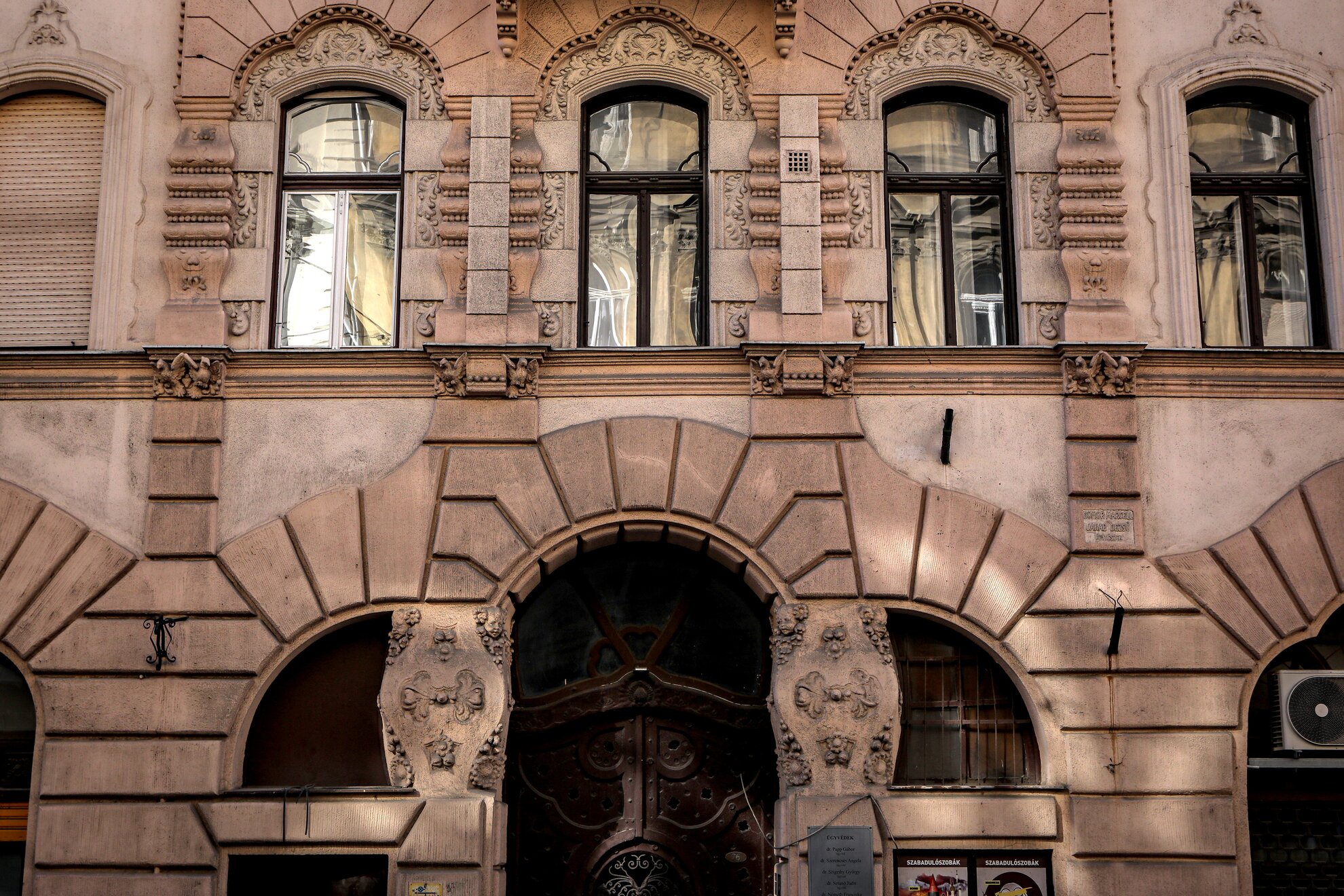
Lechner style
“On
the corner of Szondi and Csengery utca, we designed a speculative
three-storey residential building in a fantastically Hungarian style. The Lechner
elements somehow marry ordinary apartment buildings with style,” writes Komor
Marcell.
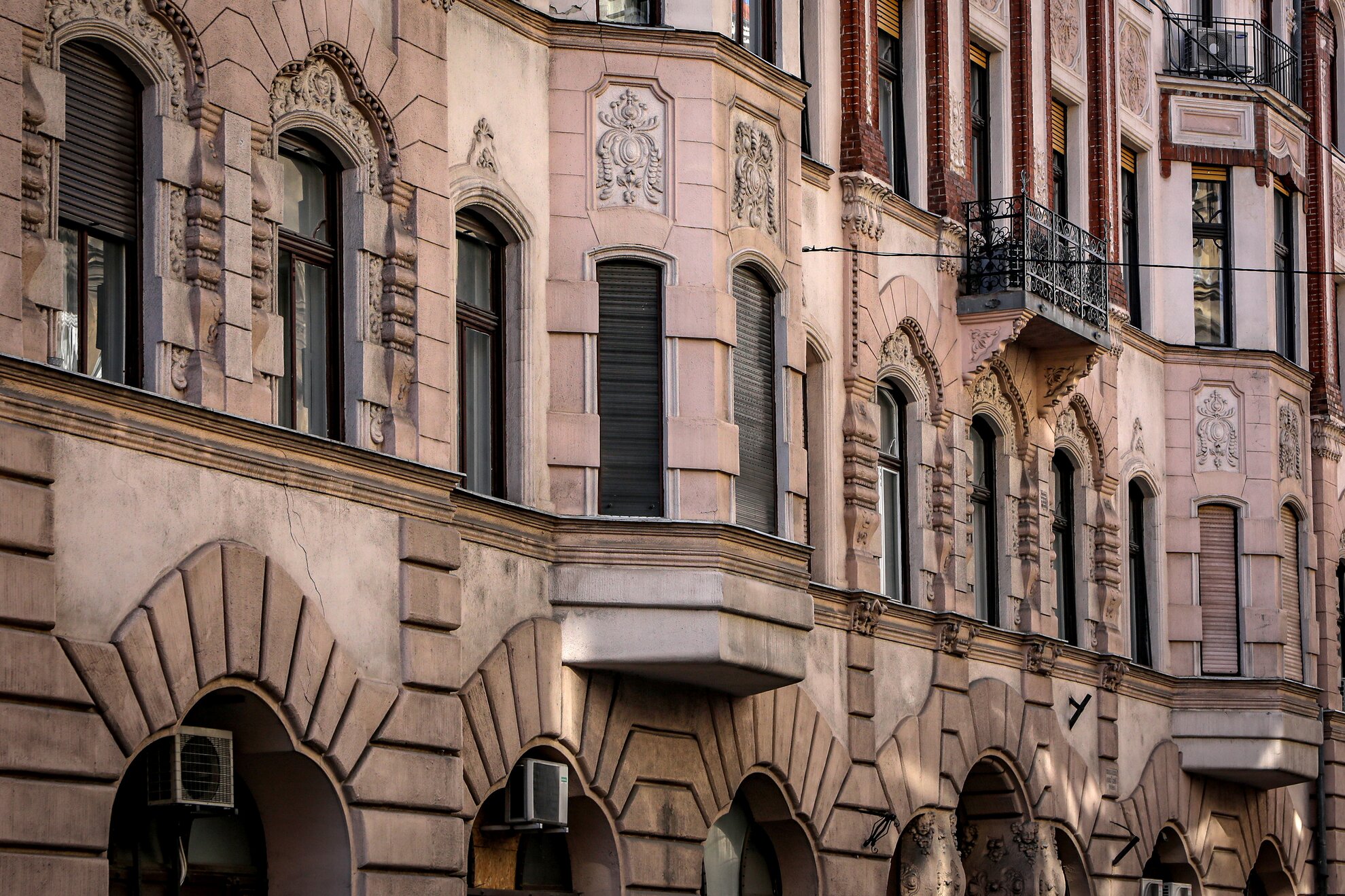
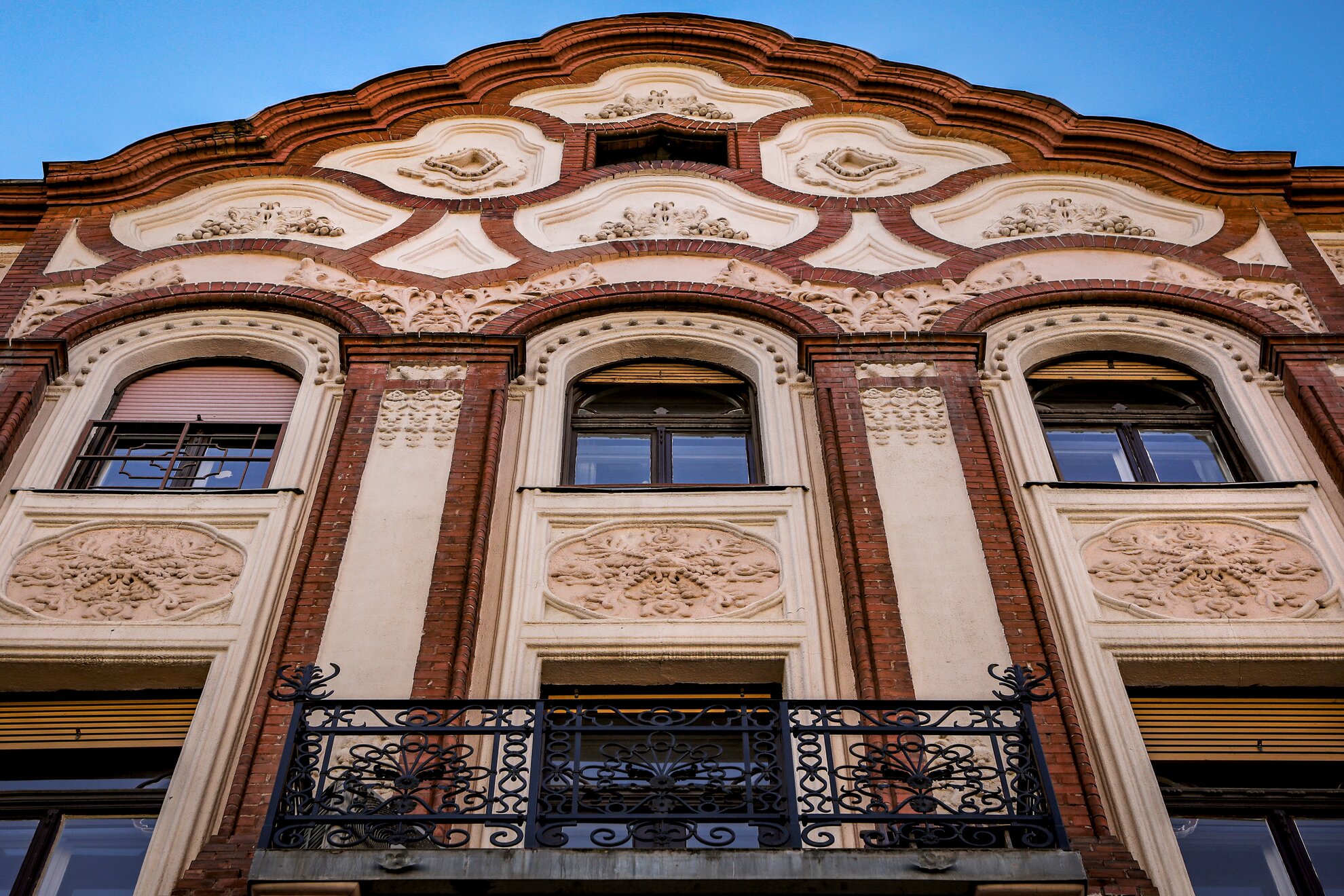
The façade is replete with ribbons, tendrils, tulips and hearts, which reappear on the interior of the building as well. Anyone who likes to get lost in detail should also take a look at the grate, as the wrought-iron piece is full of natural-themed ornamentation.
Unfortunately
the inner courtyard has not been maintained with the same care as the exterior
of the building, and this is where you see the greatest sign of wear and
deterioration. It’s hard to believe that the building was renovated as recently
as 2012, as issues with damp in the walls have led to swift atrophy.
On the one
hand, the unfortunate decay of such a lovely building is painful to see,
but on the other, the leafy, wrought-iron railings, the columns dotted
with flowers and the lace-like detailing all make this a true wonder.
